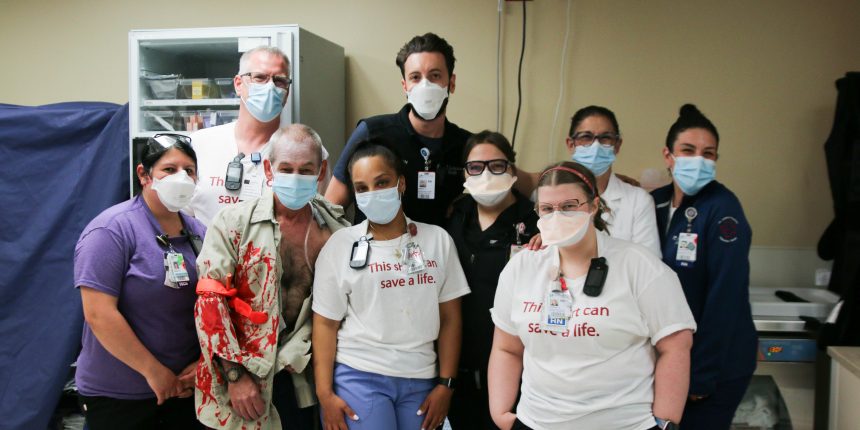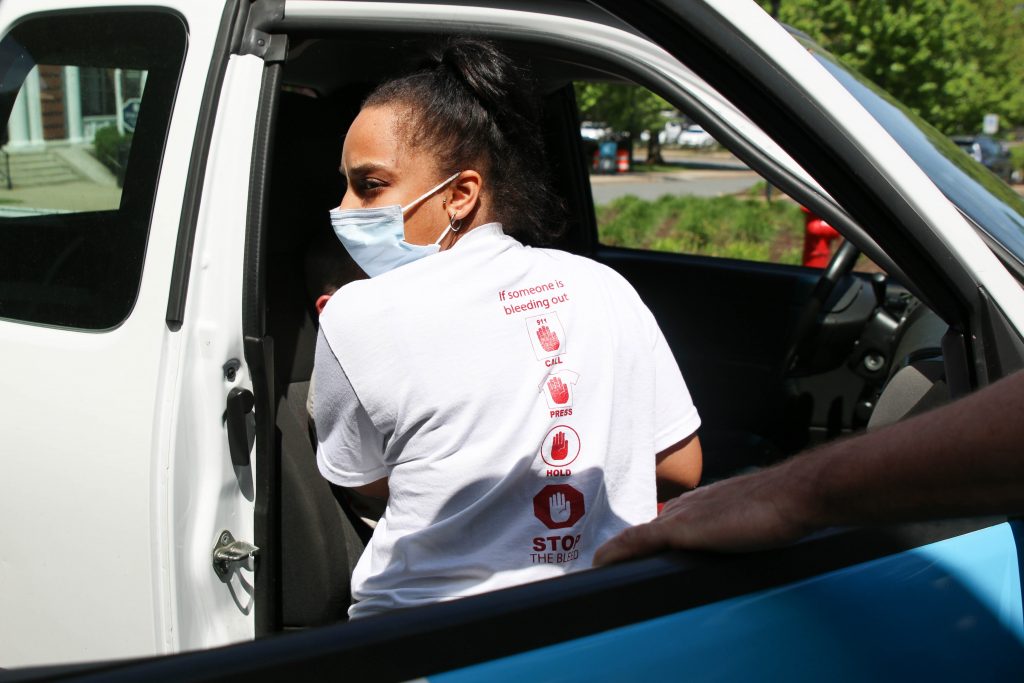Community
St. Luke’s host ‘Stop the Bleed’ Simulations

Joint simulations at St. Luke’s Hospital bring teams together to ‘Stop the Bleed’
NEW BEDFORD, Mass. – The St. Luke’s Hospital Emergency Department, Trauma team, and area first responders, along with medical professionals across the country, recently took part in Stop the Bleed Day during National Trauma Awareness Month to emphasize the importance of using tourniquets and other bleeding-control methods in emergency situations to stop life-threatening bleeds quickly.
The Stop the Bleed campaign is a collaborative effort
The Stop the Bleed campaign is a collaborative effort initiated by the Department of Homeland Security and the American College of Surgeons with a goal of sharing essential knowledge and conducting training programs about controlling bleeding from serious injury. Stop the Bleed equips and empowers bystanders to help in a fast-moving situation before emergency services can arrive on scene.

“The program is a fantastic thing, and I’m glad we’re doing it. It can really make a difference,” said Dr. Brandon Fumanti, a Trauma Physician at St. Luke’s Hospital. “If people in the community can learn to stop bleeding and get patients to the Trauma Center, it can save a lot of lives.”
Throughout May 20, starting at 5am, each Emergency Department shift participated in a fast-paced Stop the Bleed simulation.
“We want to make sure that our community and all team members know how to perform life-saving measures to stop bleeding,” said St. Luke’s Trauma Program Manager Stephanie Smith-Raby. “This program helps team members exercise their skills in a simulation and to practice activating our trauma response in these types of situations.”
St. Luke’s Trauma Center remains on track to earn a Level II Trauma Center verification and designation
The St. Luke’s Trauma Center remains on track to earn a Level II Trauma Center verification and designation later this year. Currently, St. Luke’s has a full trauma team onboard, with trauma surgeons and staff available 24/7, as Southcoast Health continues on the path to full verification from the American College of Surgeons and designation from the Commonwealth of Massachusetts.
A Level II Trauma Center is equipped to treat any type of trauma patient and has the same clinical capabilities as a Level I center. Unlike a Level I center, it is not required to conduct research or have residency programs.
Traumatic injuries remain the leading cause of death for individuals up to the age of 45, according to the Centers for Disease Control and Prevention. Becoming a Level II Trauma Center will enable St. Luke’s to treat patients who have suffered traumatic injuries as a result of accidents and other life-threatening events. This will benefit the patient, their loved ones, and emergency services, all of whom will not have to travel to Boston or Providence for definitive care.
In a trauma situation, patients often find themselves in a race against time
“The closest Trauma Center is Rhode Island Hospital, a 30- to 45-minute drive away,” said Dr. Theodore Delmonico, a Trauma Surgeon at St. Luke’s Hospital. “Not only is a long drive dangerous for a very sick patient and difficult for their family, but it also takes that ambulance out of commission for a few hours. In the New Bedford region, there are limited ambulances available, so it would be beneficial to keep them close to the community.”
In a trauma situation, patients often find themselves in a race against time. Receiving high-quality medical care quickly and close to home is essential. Through programs like Stop the Bleed and other injury-prevention initiatives and requirements, Southcoast Health and St. Luke’s are striving to achieve Level II Trauma Center verification and designation to provide critical, timely care to those who need it most – during the moments that matter most.
